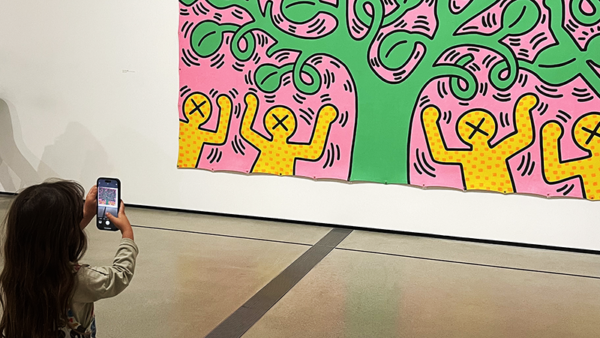The documentary “Art for Everyone? — Keith Haring at The Broad” illustrates the largest solo exhibition of his work in Los Angeles. The film’s title question mark tries to bring attention to the misconception that his art is simple; it is not. Haring’s work is very complex. His commitment to a free and happy life is only understandable against his concepts of power and threat, death and deliverance, religion, sexuality, heaven, and hell. These subjects do not appear in isolation from each other but interact and almost inevitably overlap one another.
Keith Allen Haring (May 4, 1958 – February 16, 1990) was an American artist whose pop art emerged from the subculture of the 1980s, particularly in New York. Why does his work remain so popular over three decades after his death at thirty-one? His art, instantly recognizable, is everywhere in garments of easy consumption. It is simple and cheerful: radiant babies, barking dogs, hearts, and a three-eyed smiling face.
His stated goal was to create art that was accessible to all beyond the walls of museums and galleries. He wrote a manifesto-cum-self-definition that included the words: “The public has a right to art/The public is being ignored by most contemporary artists/Art is for everybody.”

This premise was not new. In the early 1600s, Caravaggio broke dependence on commissions from the church, which dictated themes and censored results. He opened the road of individualism. Mexican muralists such as Siqueiros and Diego Rivera strove to create public art. The Communists used art to convey ideological propaganda, and Roy Lichtenstein made large-scale public art on popular subjects consumed by the public.
There are several reasons for Keith Haring’s continuous success in the 2020s. The sexuality of his paintings relates to openness towards LGBTQ. The apparent simplicity appeals to people with a short span of attention. His figures lack discernable ages, races, or identities. Their vitality and joy speak to people of all ages, all backgrounds.




















